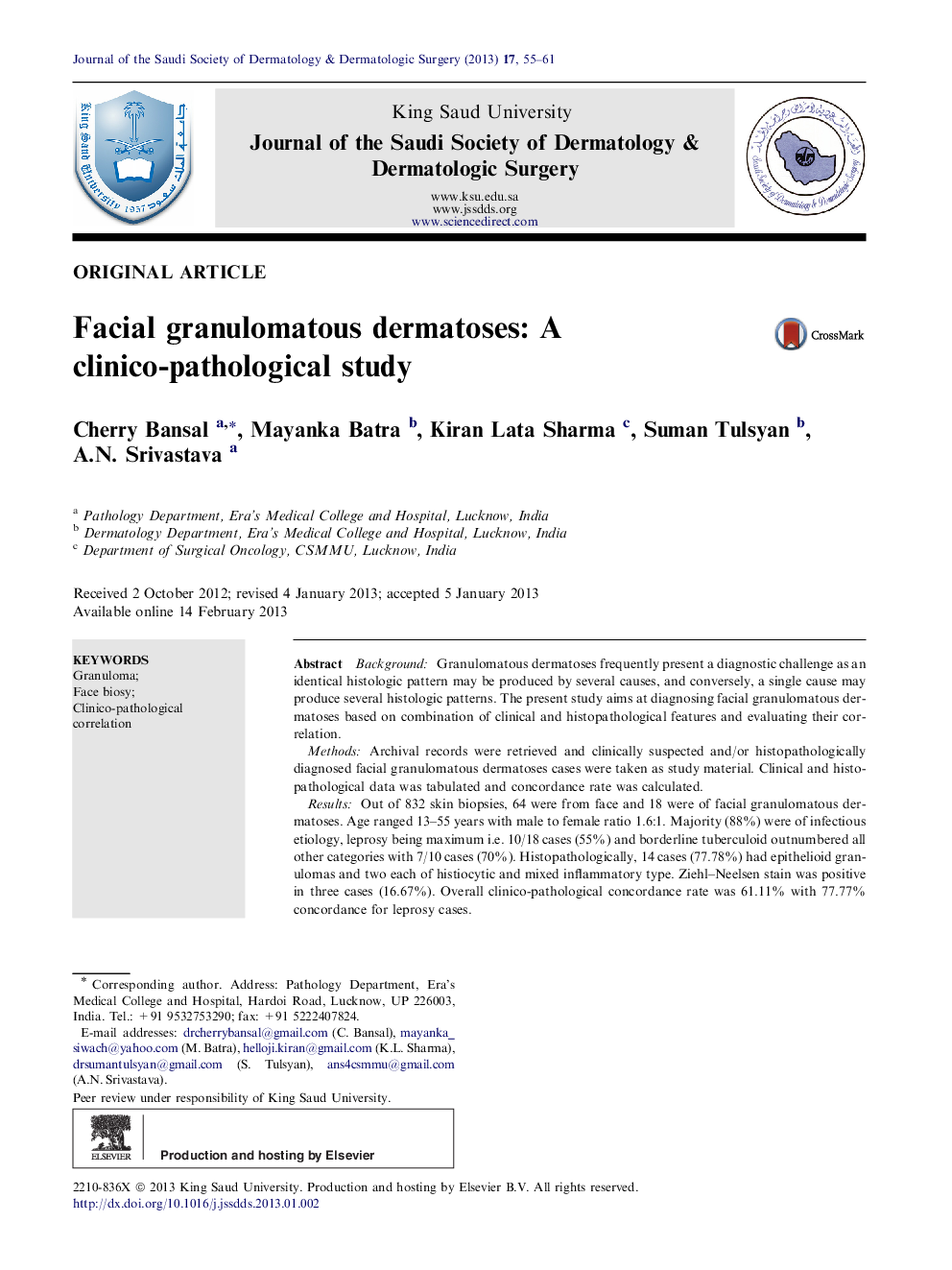| Article ID | Journal | Published Year | Pages | File Type |
|---|---|---|---|---|
| 3220380 | Journal of the Saudi Society of Dermatology & Dermatologic Surgery | 2013 | 7 Pages |
BackgroundGranulomatous dermatoses frequently present a diagnostic challenge as an identical histologic pattern may be produced by several causes, and conversely, a single cause may produce several histologic patterns. The present study aims at diagnosing facial granulomatous dermatoses based on combination of clinical and histopathological features and evaluating their correlation.MethodsArchival records were retrieved and clinically suspected and/or histopathologically diagnosed facial granulomatous dermatoses cases were taken as study material. Clinical and histopathological data was tabulated and concordance rate was calculated.ResultsOut of 832 skin biopsies, 64 were from face and 18 were of facial granulomatous dermatoses. Age ranged 13–55 years with male to female ratio 1.6:1. Majority (88%) were of infectious etiology, leprosy being maximum i.e. 10/18 cases (55%) and borderline tuberculoid outnumbered all other categories with 7/10 cases (70%). Histopathologically, 14 cases (77.78%) had epithelioid granulomas and two each of histiocytic and mixed inflammatory type. Ziehl–Neelsen stain was positive in three cases (16.67%). Overall clinico-pathological concordance rate was 61.11% with 77.77% concordance for leprosy cases.ConclusionMajor cause of granulomatous diseases in developing countries is still infection. Clinicohistopathological constellation is important to pinpoint a diagnosis to mete out appropriate treatment.
